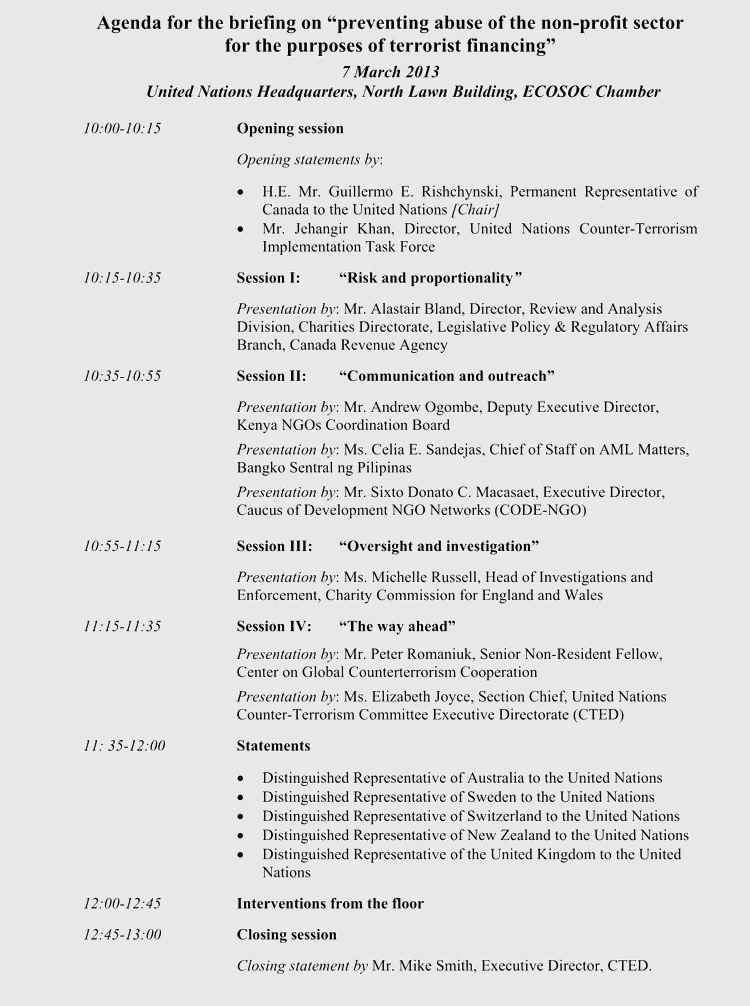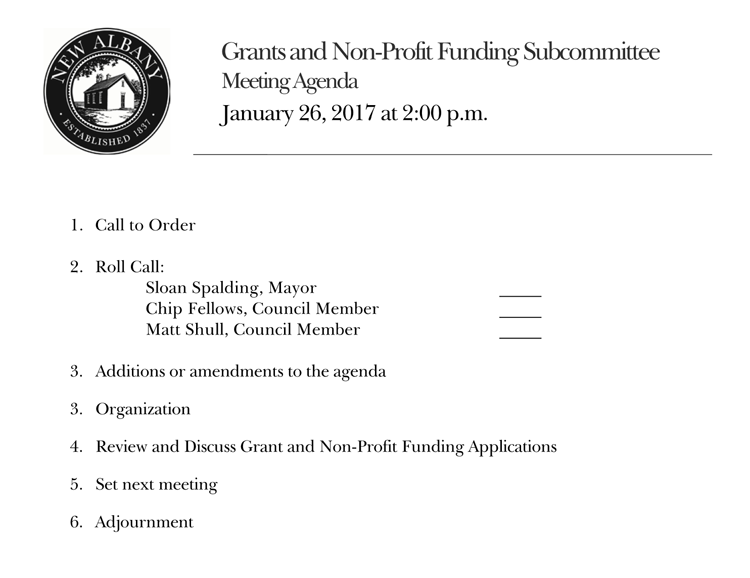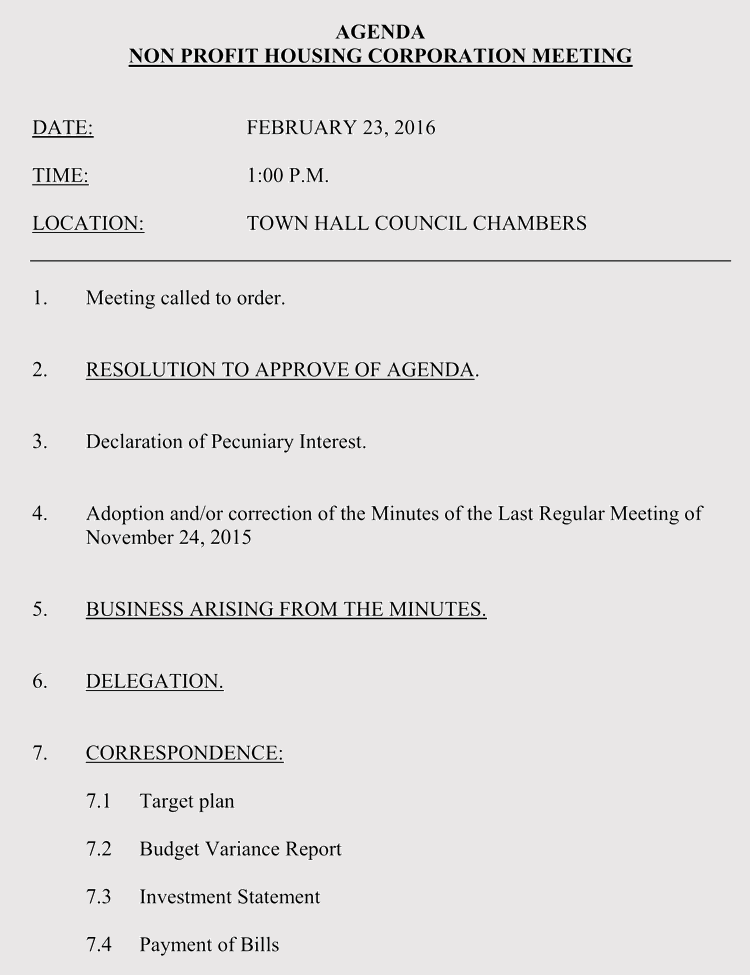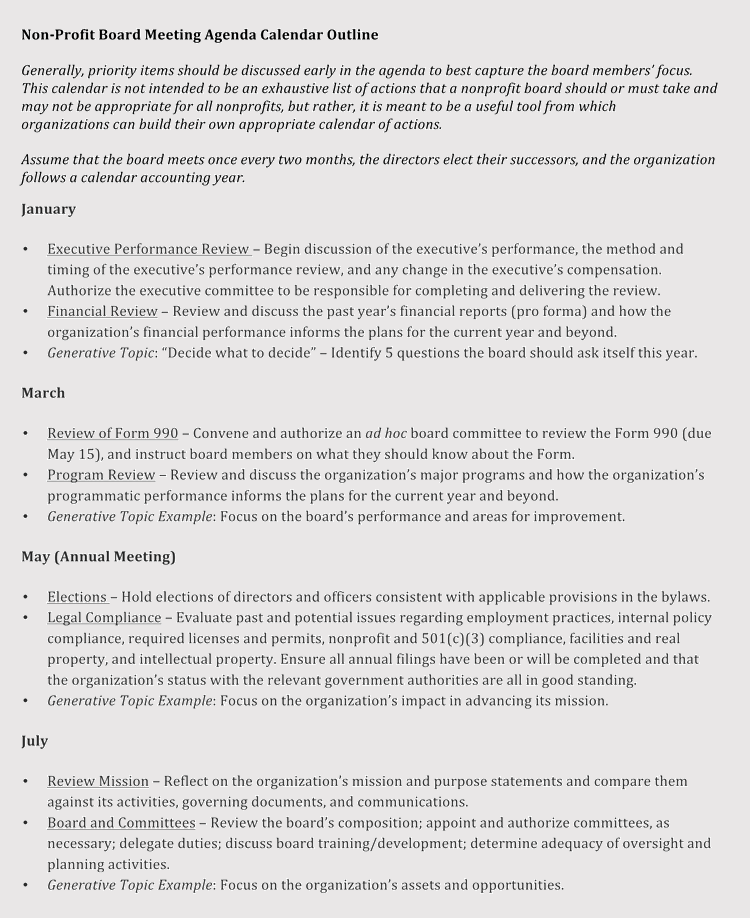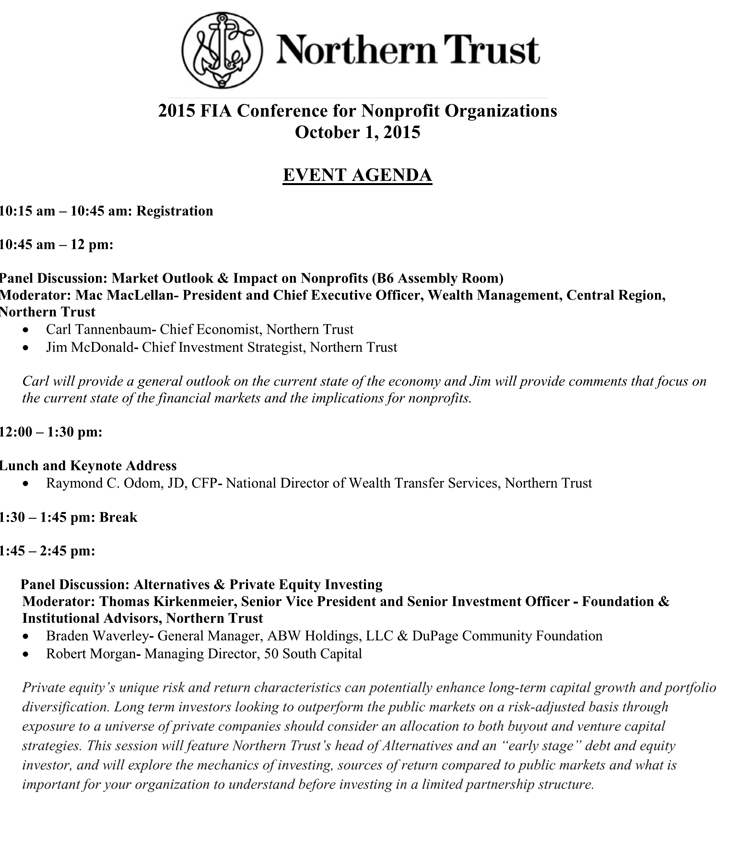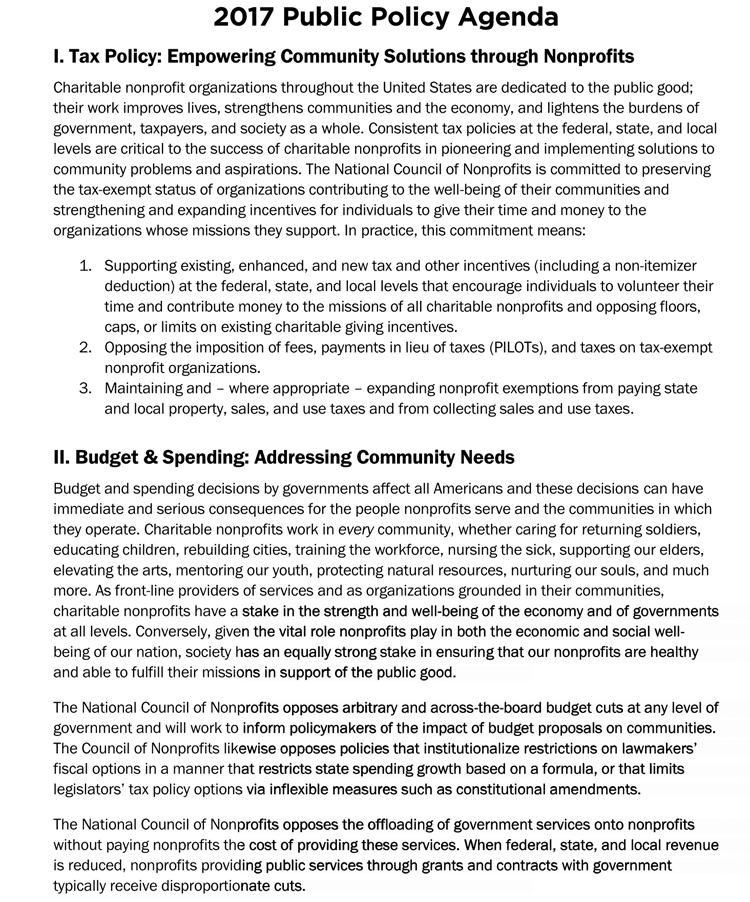A meeting agenda is defined as a document that outlines the topics for discussion and activities to be carried out during a meeting.
Whereas:
A template is a pre-build format that can be utilized to create and plan meeting agendas effectively.
Once prepared, it is sent to the attendees before the meeting. The agenda is vital as it guides and confines the meeting participants on the matters they can talk about. Therefore, it should be carefully prepared to ensure that the general objective of the meeting is achieved.
Meeting Agenda Templates
Given below are different meeting agenda templates:
Weekly agenda templates
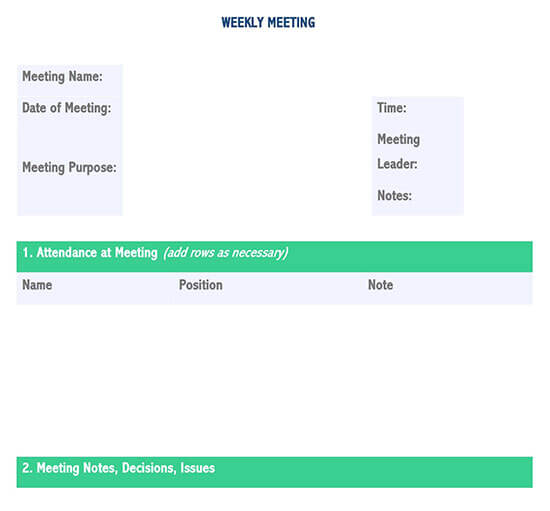
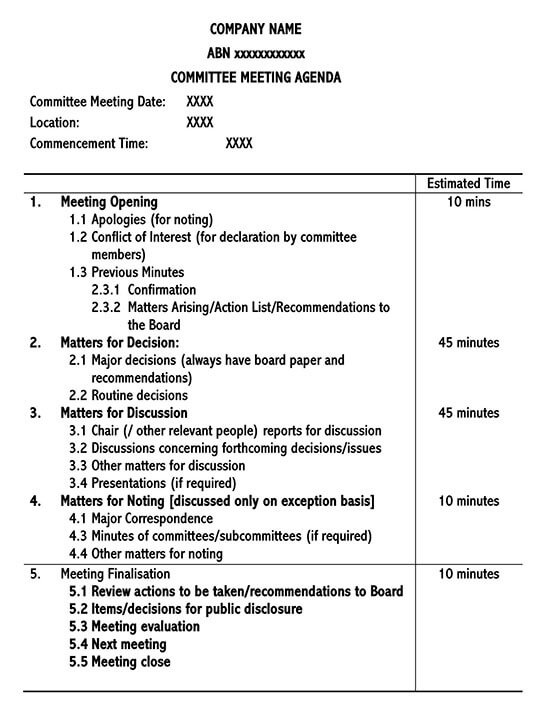
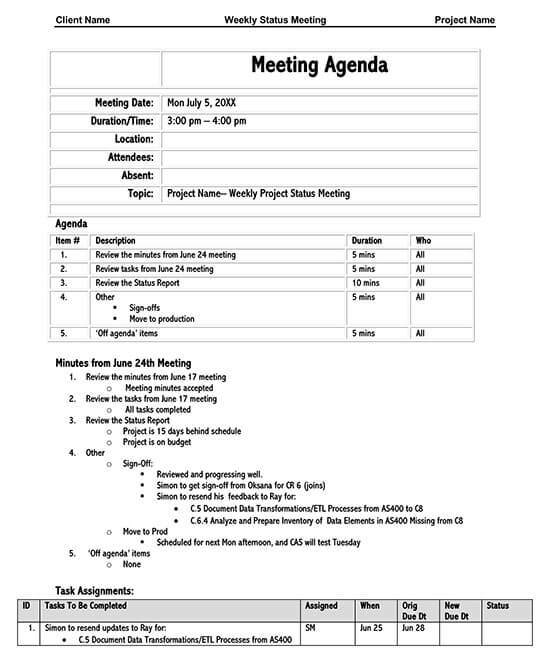
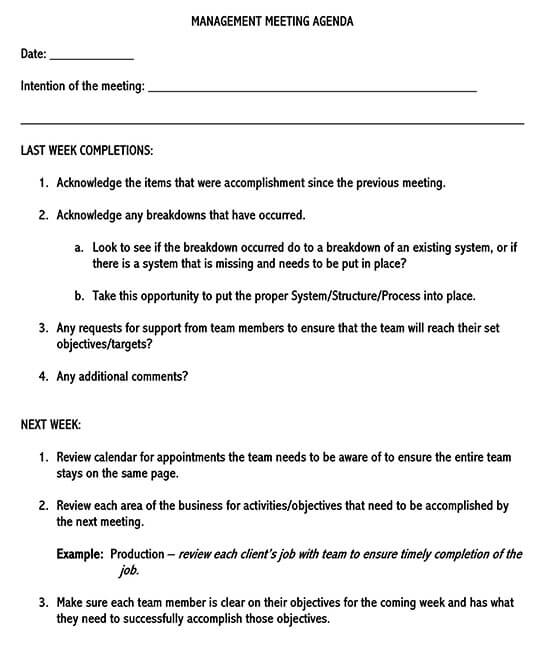
Non-profit agenda templates
Interview agenda templates
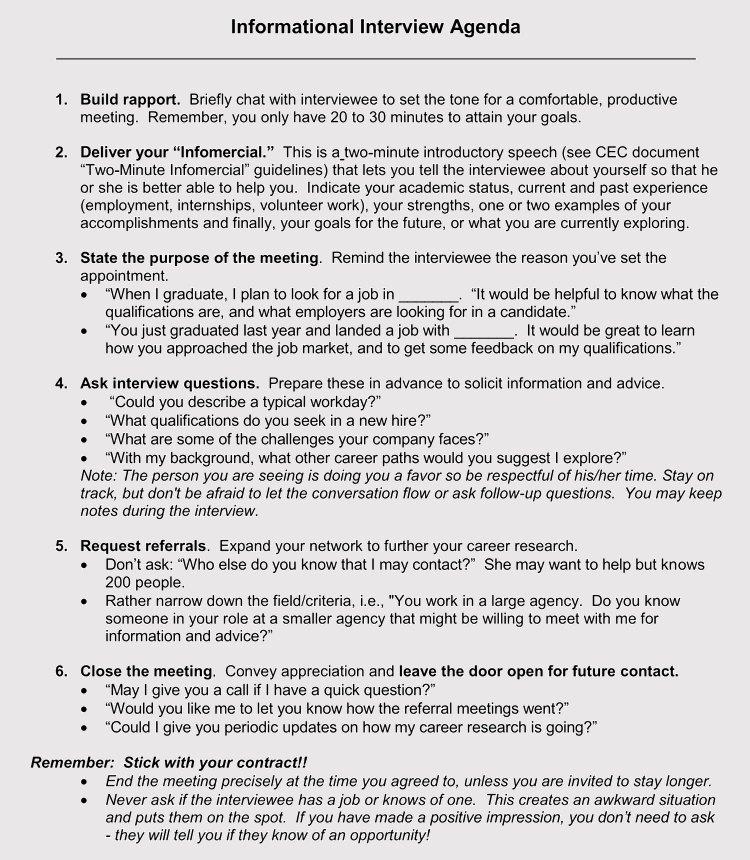
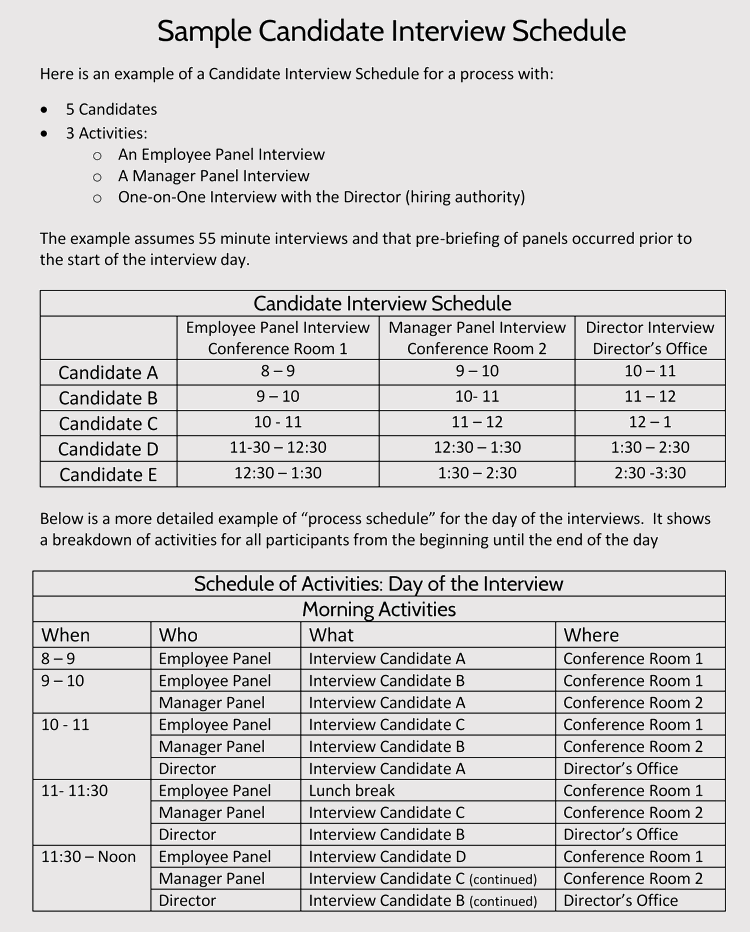
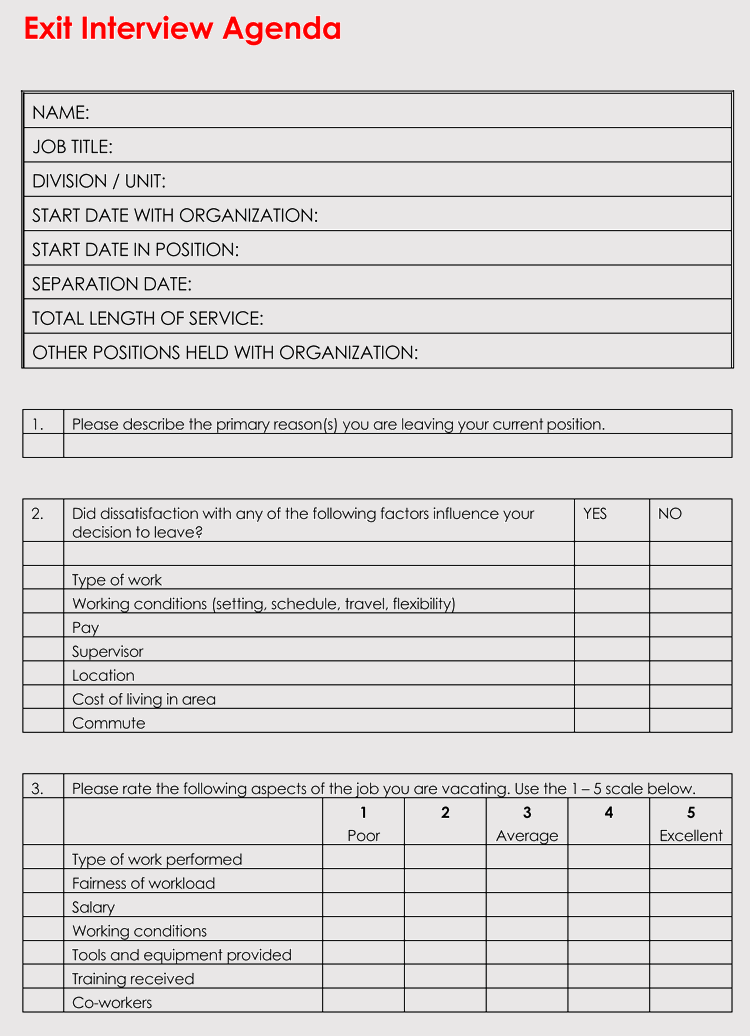
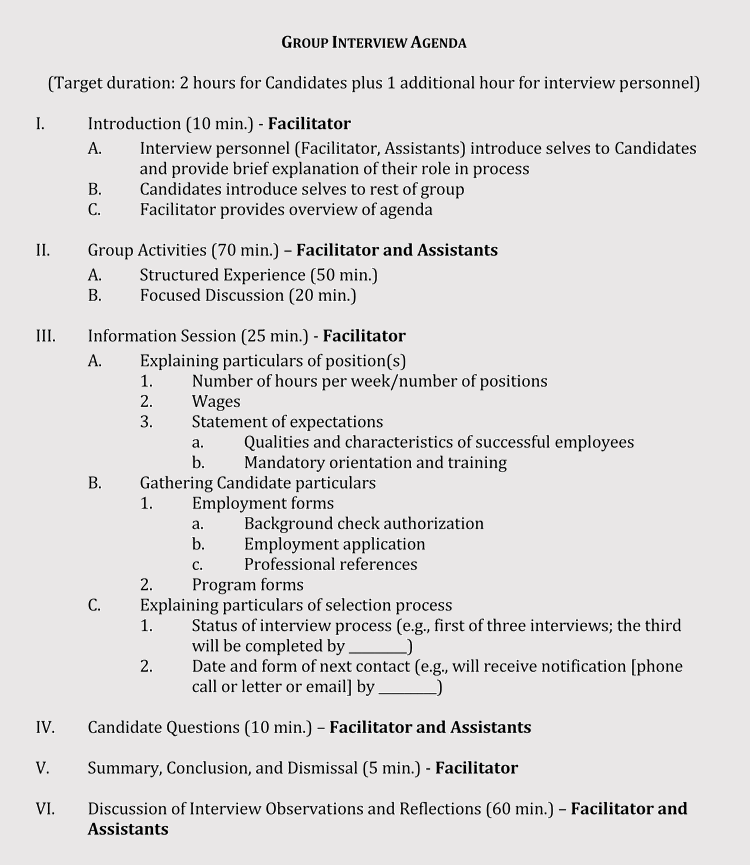
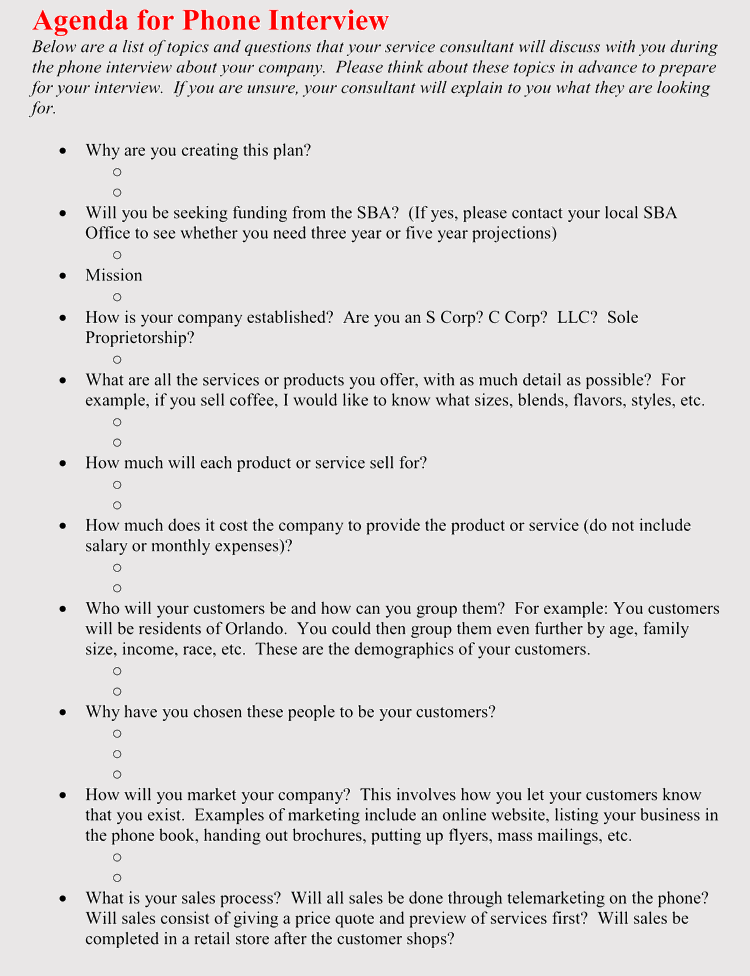
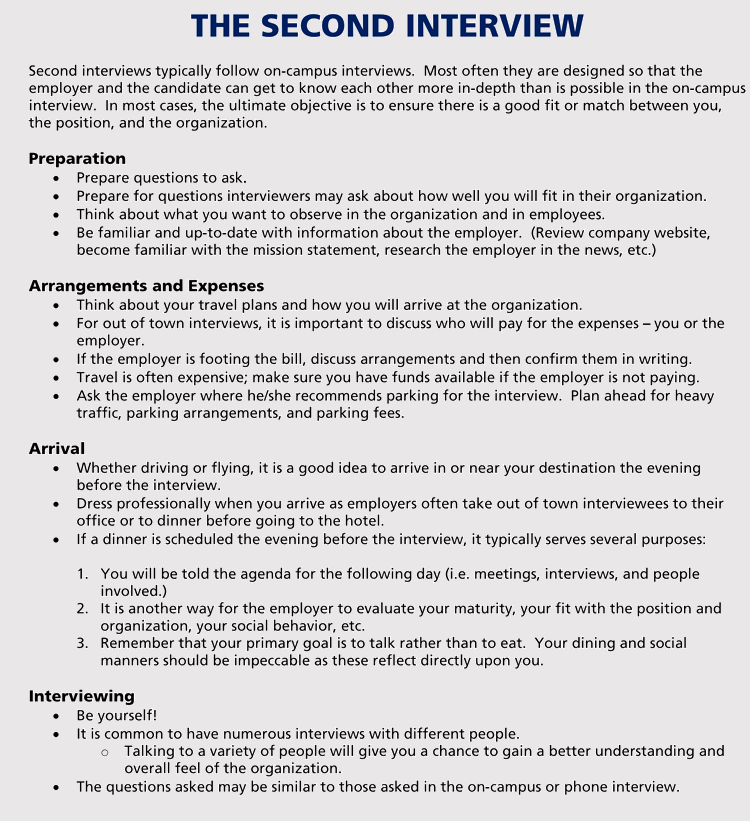
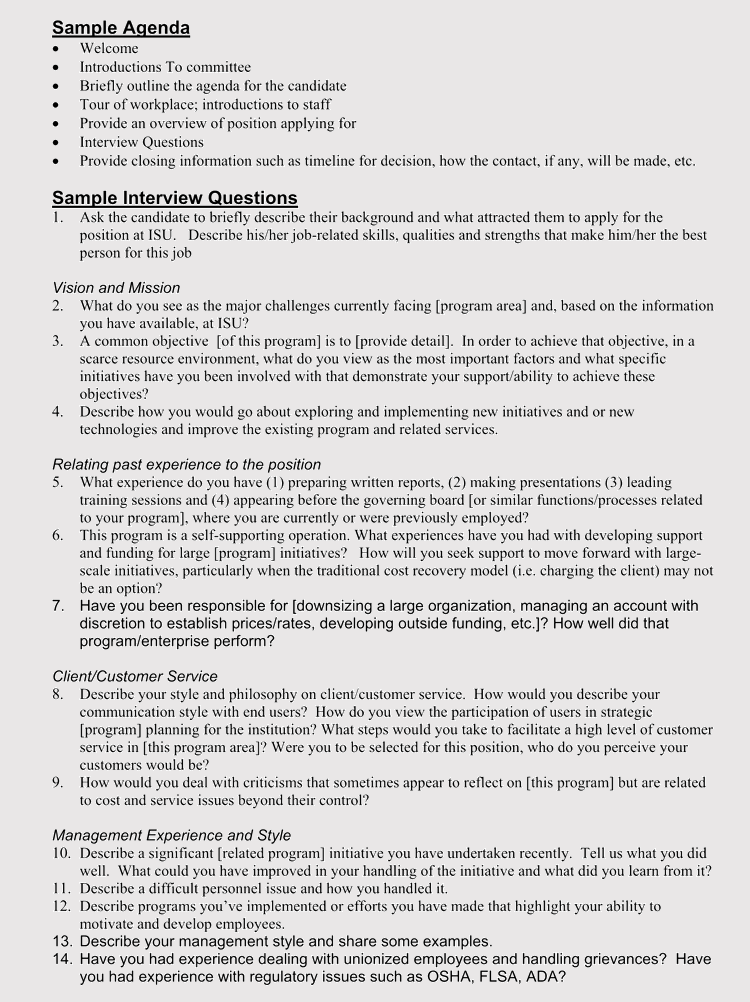
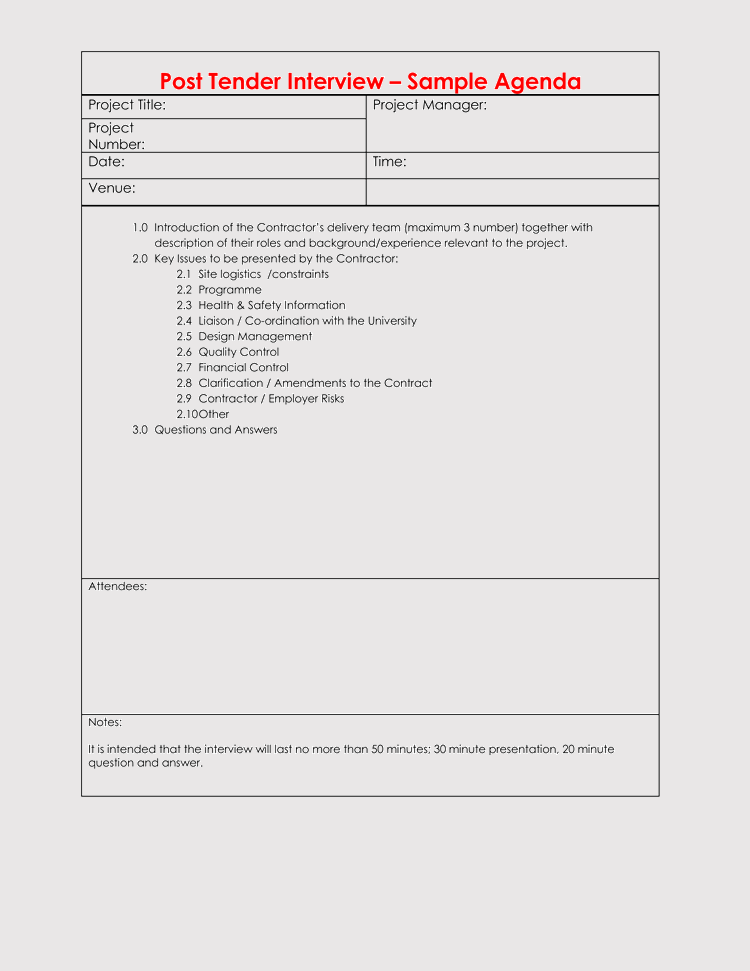
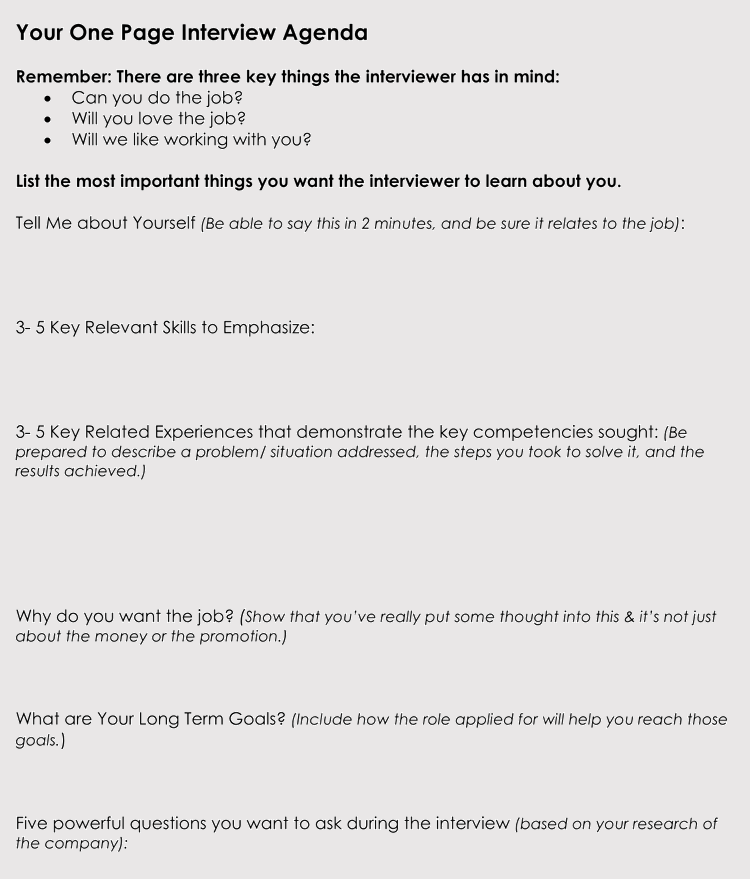
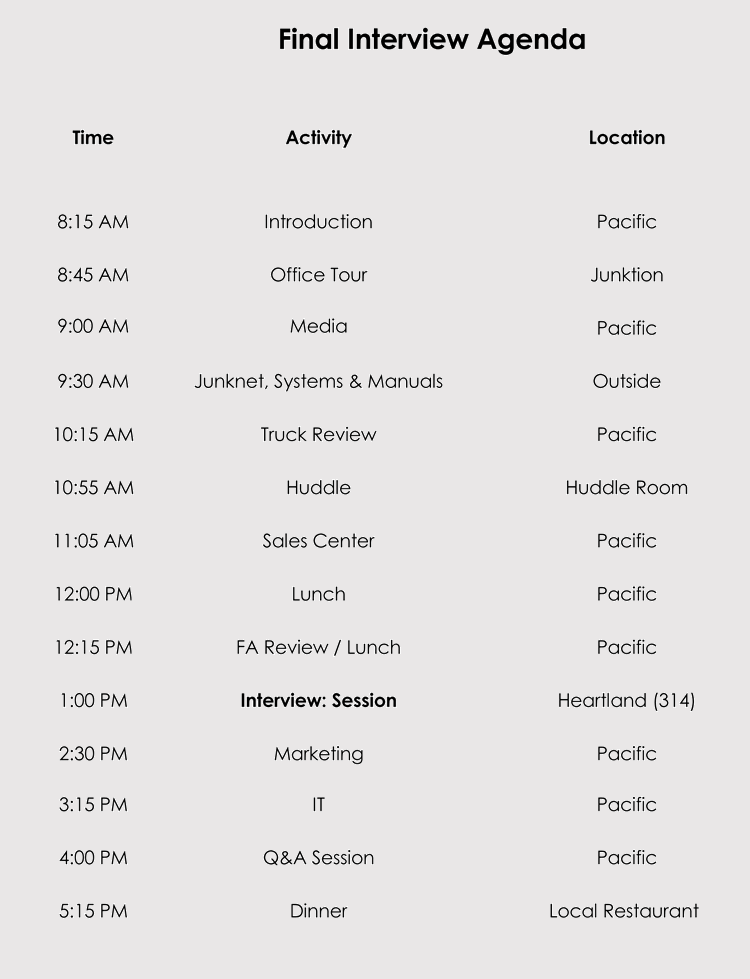
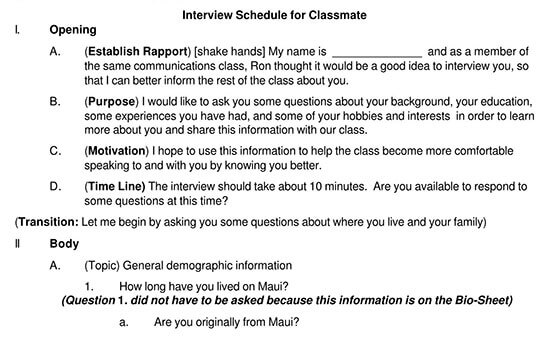
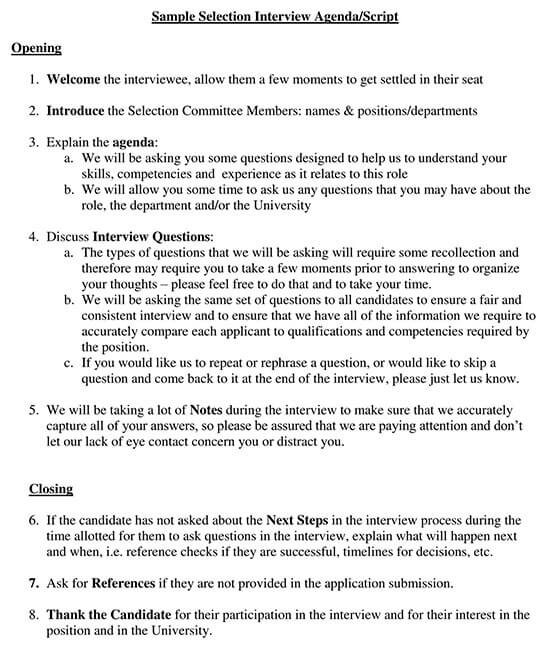
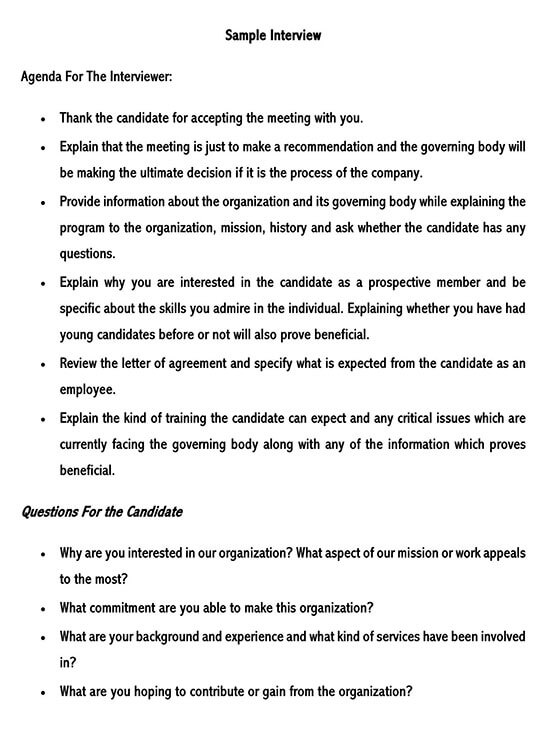
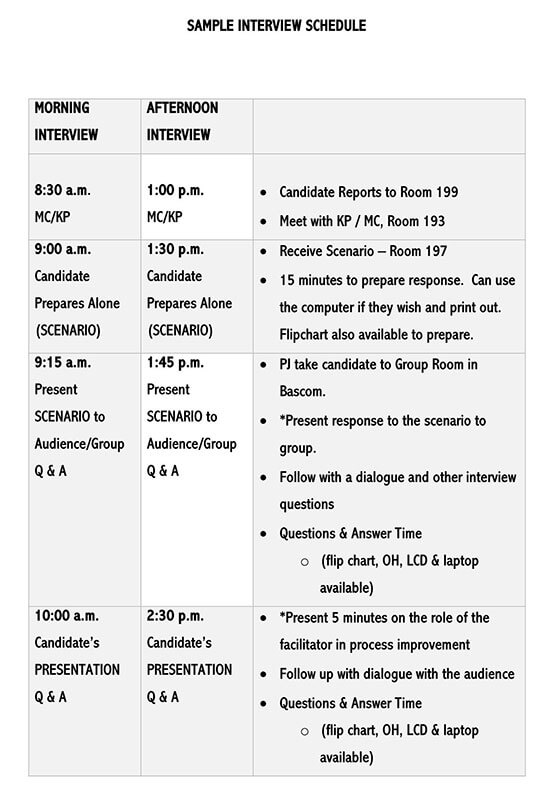
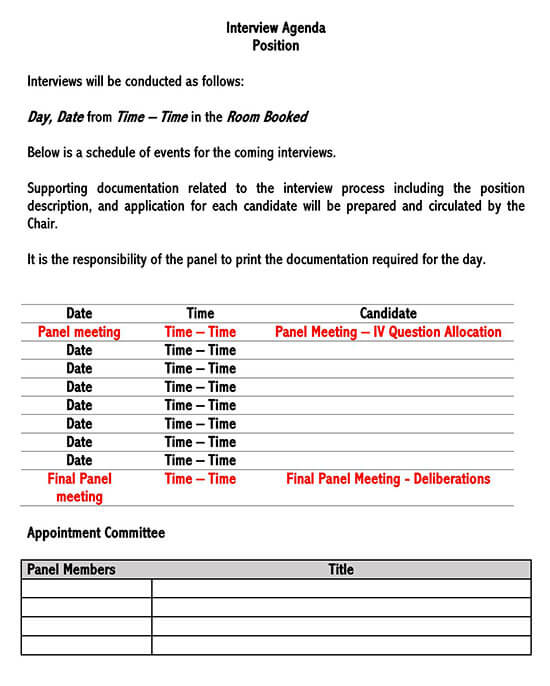
Purpose
An agenda serves different purposes that are crucial in conducting a successful meeting. Firstly, it gives the attendees an advanced notice of all the matters that will be prioritized during the meeting. This way, participants can prepare their notes, questions, and presentations and remain focused on the topic(s) of discussion.
Agenda also clarifies the expectations of the company and the activities that ought to happen before and during the meeting. Once the expectations have been outlined, participants can prioritize and first address the reason(s) for conducting the meeting before anything else.
Meetings are difficult due to schedule differences between attendees. Therefore, the minimal time that has been allocated to conduct a meeting needs to be optimally utilized. Having an agenda ensures that time management is effectively observed for an agenda is a time management tool that can allocate time to all the activities such as introductions, presentations, etc., to be carried out.
Types of Agenda
Meeting agendas can be used for any meeting, whether it is formal or casual, departmental or organizational, sales or staff meeting, etc. As a result of the diverse applications of an agenda, there are different types of agendas. Some of the common types of agendas are outlined below:
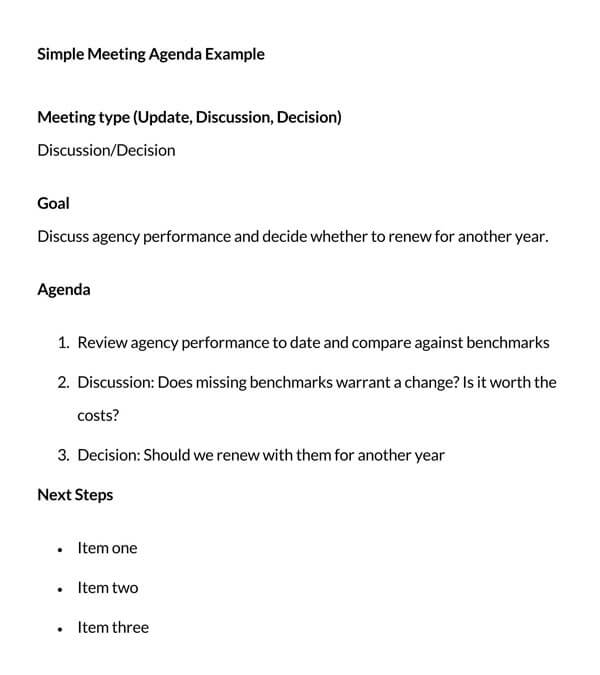
General Meeting Agenda Sample
Download: Microsoft Word (.docx)
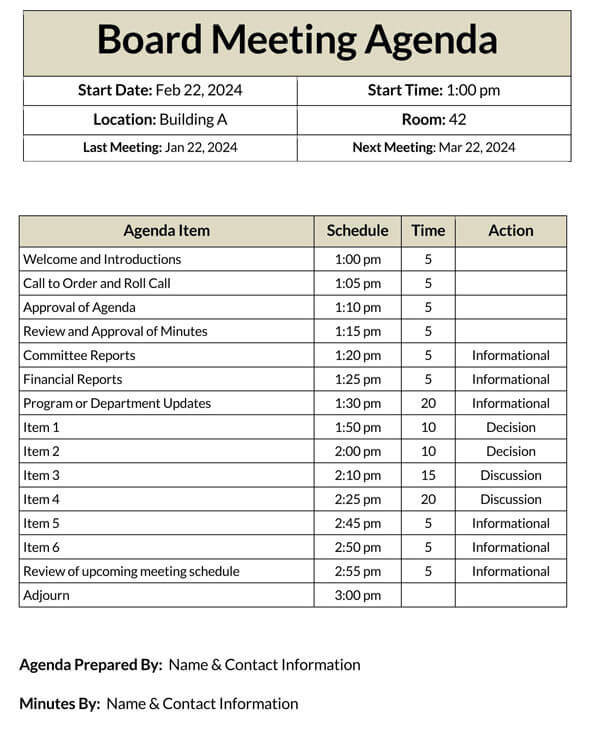
Board Meeting Agenda Sample
Download: Microsoft Word (.docx)
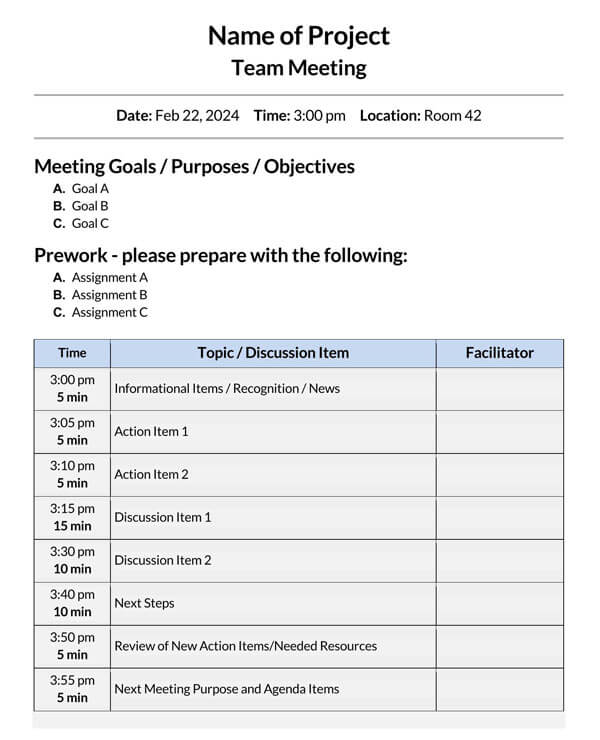
Team Meeting Agenda Sample
Download: Microsoft Word (.docx)
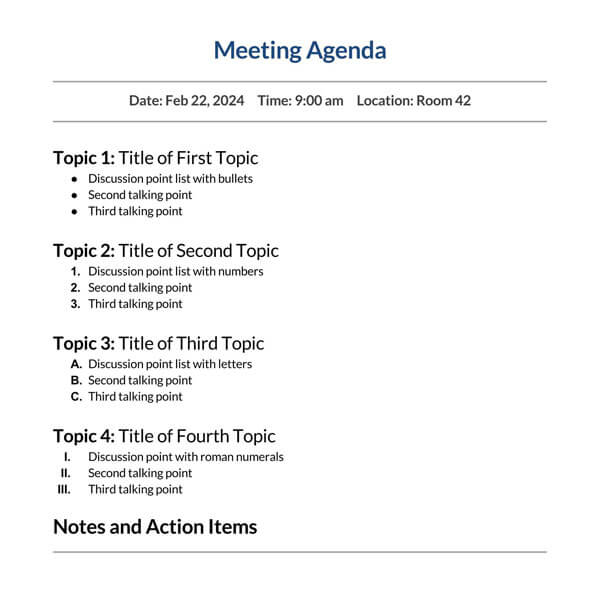
Retrospective Meeting Agenda Sample
Download: Microsoft Word (.docx)
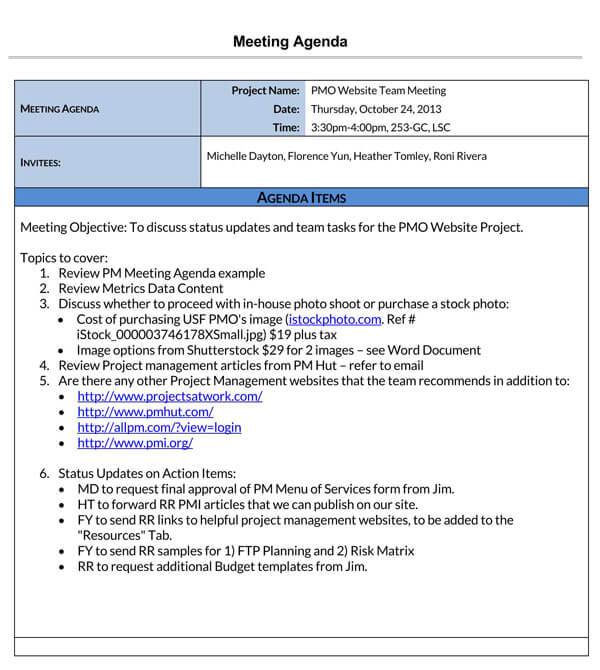
Project Meeting Agenda Sample
Download: Microsoft Word (.docx)
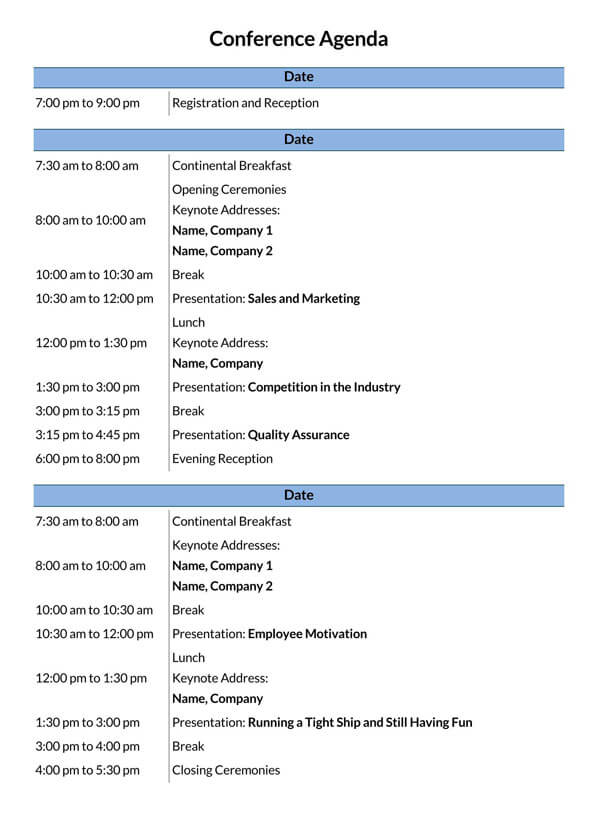
Conference Meeting Agenda Sample
Download: Microsoft Word (.docx)
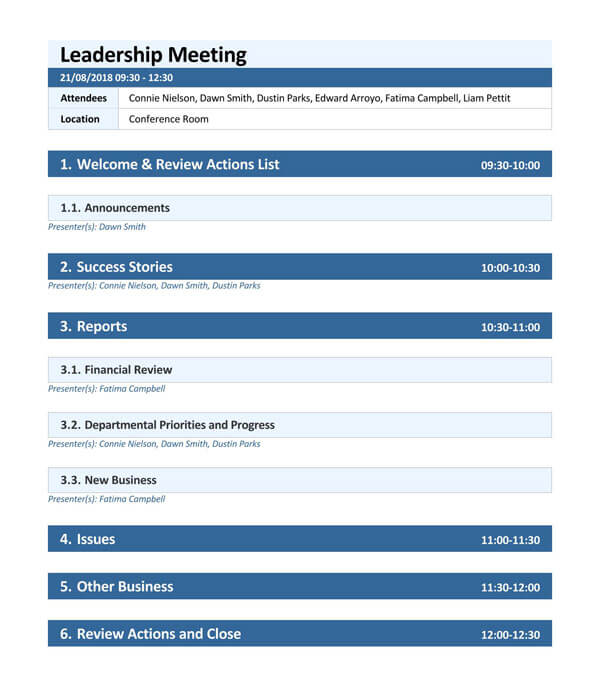
Leadership Meeting Agenda Sample
Download: Microsoft Word (.docx)
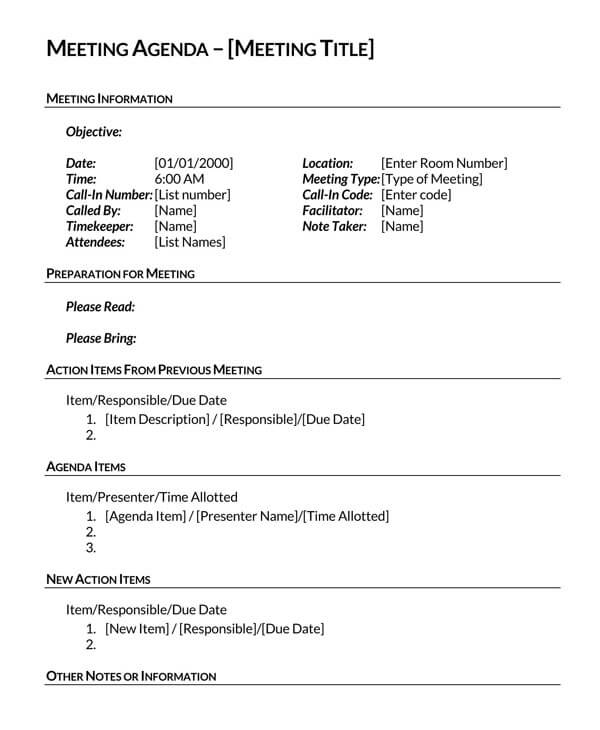
Business Meeting Agenda Sample
Download: Microsoft Word (.docx)
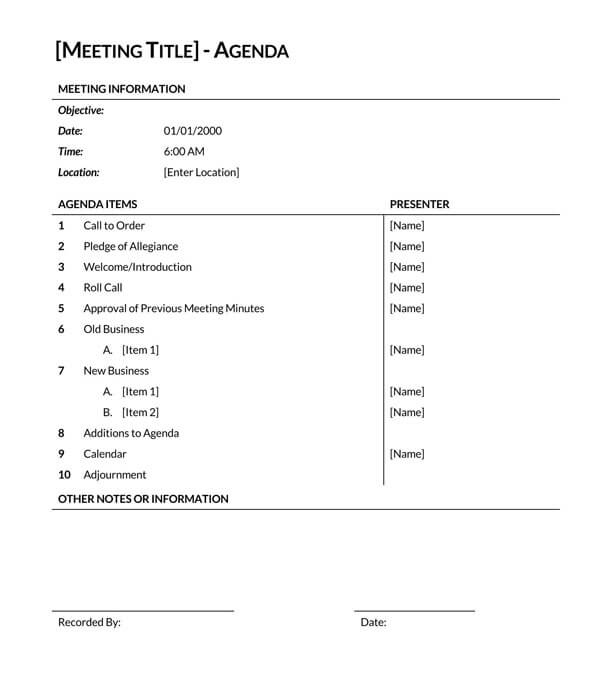
Committee Meeting Agenda Sample
Download: Microsoft Word (.docx)
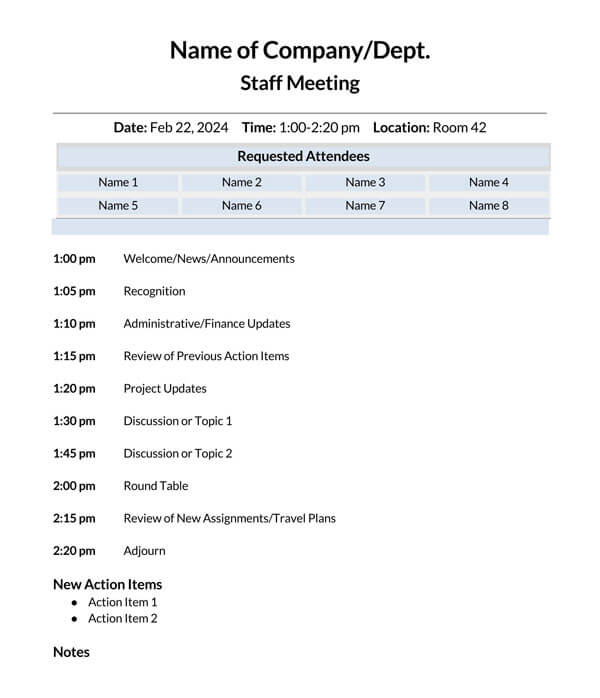
Staff Meeting Agenda Sample
Download: Microsoft Word (.docx)
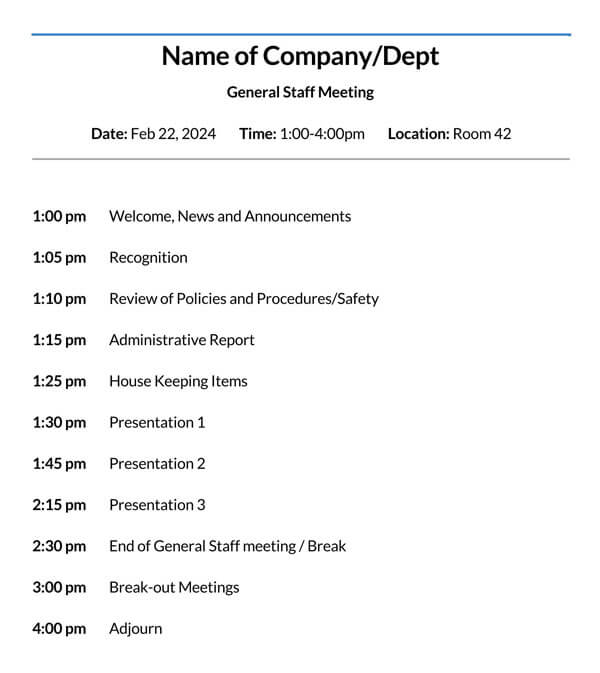
General Staff Meeting Agenda Sample
Download: Microsoft Word (.docx)
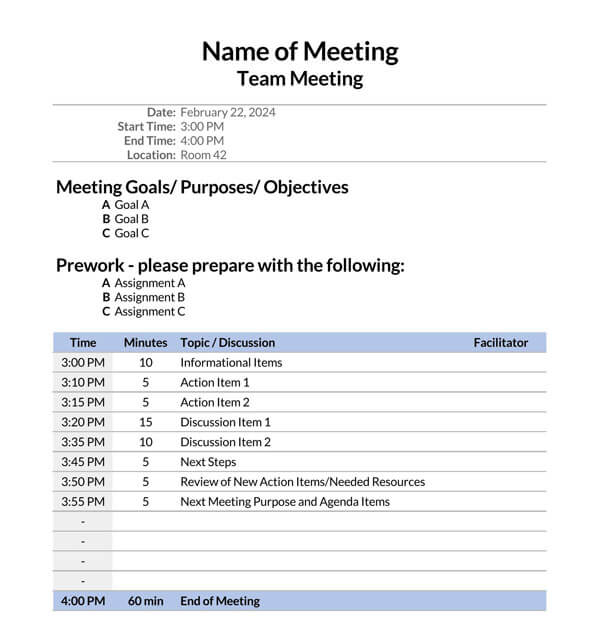
Calculated Time Meeting Agenda Sample
Download: Microsoft Word (.docx)
Components of an Agenda
When creating an agenda, the goal is to have a quality agenda that assists in carrying out a productive meeting. Even though the agenda will vary depending on the type of meeting and its objectives, fundamental components should appear on the agenda. This article will discuss how these key components can be structured when crafting the agenda.
Welcome and introduction
Firstly, the agenda should welcome the attendees as a way of officiating it.
Then, the agenda should welcome and introduce the attendees. Under the welcome and introduction, the agenda should outline the purpose to let the participants know what they will be participating in and prepare them to contribute to the meeting. The introduction can be as simple as one statement that states its purpose, such as “Objective: Monthly staff meeting.”
tip
The agenda can also indicate activities such as call to order, roll call, and approval of the previous meeting minutes.
Agenda overview
Next, give a quick summary of the topics of discussions, activities as well as decisions to be made. The agenda overview must relate to the desired outcome (s). The most time-sensitive items should appear first so as to be prioritized, while time-consuming and controversial discussions should be listed next. Less sensitive and low-impact items should then follow. Consider breaking down a single, significant topic of discussion into smaller items so that in the event that it does not address the larger issue, it can resolve portions of it.
tip
Timely announcement can help prepare an inclusive agenda and assist in ranking the topics and activities in order of priority based on the feedback from expected participants.
Presentation
Next, outline minutes from the previous meeting that are relevant or related to the objective of the one to be held. Also, add any documents such as standard reports that shall be discussed. Attendees should be made aware of items that are necessary for the meeting to be productive.
Status update
Afterward, indicate the progress made on implementing the decisions and outcomes of the previous meeting. This can be done by attaching the progress reports from the chairman, staff reports, team leader reports, etc. Each participant that has an update to report on can be allocated a specified time limit.
Discussion
The agenda should then outline how the different topics shall be handled by allocating appropriate time to each item or speaker. Avoid allocating time such that the meeting ends up being unnecessarily long. People prefer relatively short ones that are productive. To avoid having to conduct a long meeting, the company can keep the number of topics and activities to a minimum. The agenda should indicate the starting and ending time of discussion for each item. Items such as recess can also be allocated time. Allocate time for any unresolved issues from the previous one.
note
Effective time allocation is only worth it if proper time management is observed.
Questions and answers
Then, the agenda should outline how questions, urgent and critical issues shall be raised and responded to during the meeting. Some issues might need to be “parked” for a later date; however, the agenda should be created to provide an opportunity to tackle unprecedented issues. This section can include a set of ground rules and norms that participants can use to address pressing issues in order to facilitate effective participation. These ground rules can include signals when inquiring, decision-making methods, making such as consultations, consensus, majority rule or voting, etc.
Action items
Lastly, outline the action items. Action items are tasks/assignments that need to be accomplished by either an individual or a small team. This section is initially left blank so that allocations can be done as the planning process continues. Some of the roles that can be included in this section are facilitator, note-taker, time-keeper, technology specialist (in charge of setting up sound systems, presentation set-ups, etc.), and other roles.
Tips for Agenda
To improve the effectiveness of the agenda, there are several tips a company can consider implementing when preparing the agenda template. This way, the meeting gets to address all or most of the pertinent agenda items in a transparent way.
These tips are as follows:
Make clear objectives
When writing the template, ensure that every agenda item is clearly written, more so, the objective(s) of the meeting. Attendees should be able to comprehend what it will be about without having to interpret it for themselves. Vagueness may affect the attendees’ interest or result in a lack of adequate preparation by the participants.
List agenda topics as questions or tasks
On an agenda template, the agenda topics of discussion should be presented as questions or tasks that need to be accomplished. Questions create an opportunity for participants to air different opinions and are recommended for more consultative meetings. Tasks can be used when addressing topics that are more informative in nature. Questions and tasks ensure that an orderly meeting is held. Participants can stick to one topic/question or task at a given time.
Clarify expectations and responsibilities
If the participants are expected to contribute in any other way other than attendance, the agenda template should clarify what is expected from each participant and the responsibilities assigned to each individual. Expectations can be in the form of presenting a specific report, providing insight into a particular topic, analysis, and assessment of data, etc. The company should alert the contributing participants in advance to give them ample time to prepare.
Clearly defined expectations and responsibilities ensure participants prepare their presentations based on the time allocated to them. This way, each participant keeps time during presentations, and time is well managed such that there is time to discuss all essential items.
Estimate a realistic duration (amount of time) for each topic
The company should allocate realistic proportions of time to each template item. This prevents a situation where the execution of the agenda is rushed or an overly long meeting that sees the productivity of the participants dwindle, leading to premature and hasty decisions. When allocating time to a topic, consider the time taken for introduction, raising and answering questions, evaluating potential solutions, and decision-making.
Get feedback from your team
Before presenting the final copy of the template, the company ought to ensure that they get feedback from the participants on whether all the required information/topics and agenda items were covered or topics and items are missing. Including their suggestions ensures the meeting becomes relevant to all parties, and engagement increases.
Frequently Asked Questions
To “Call to Order” is to signal the commencement or start of a meeting formally. The agenda states the point at which the meeting will start and is typically called for by the chairperson.
An agenda is a document given to the attendees notifying them of what will be discussed during the meeting before it actually takes place. It acts as a guide as to how activities will occur during the meeting, thus formulating a basis for how minutes will be prepared.
